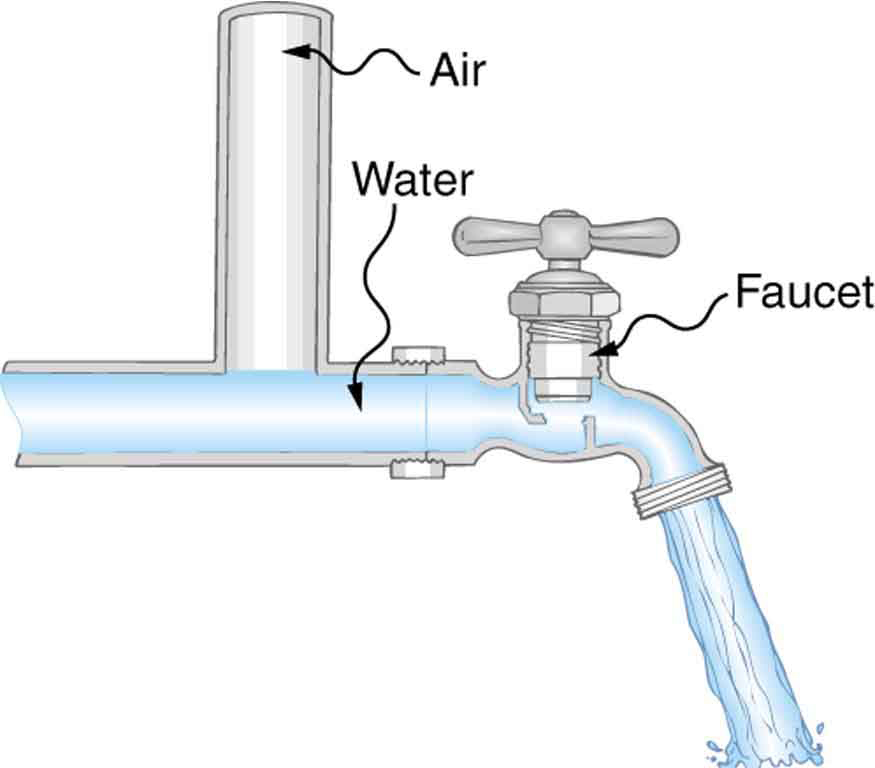| << Chapter < Page | Chapter >> Page > |
Explain why the viscosity of a liquid decreases with temperature—that is, how might increased temperature reduce the effects of cohesive forces in a liquid? Also explain why the viscosity of a gas increases with temperature—that is, how does increased gas temperature create more collisions between atoms and molecules?
When paddling a canoe upstream, it is wisest to travel as near to the shore as possible. When canoeing downstream, it may be best to stay near the middle. Explain why.
Why does flow decrease in your shower when someone flushes the toilet?
Plumbing usually includes air-filled tubes near water faucets, as shown in [link] . Explain why they are needed and how they work.

(a) Calculate the retarding force due to the viscosity of the air layer between a cart and a level air track given the following information—air temperature is , the cart is moving at 0.400 m/s, its surface area is , and the thickness of the air layer is . (b) What is the ratio of this force to the weight of the 0.300-kg cart?
(a)
(b)
What force is needed to pull one microscope slide over another at a speed of 1.00 cm/s, if there is a 0.500-mm-thick layer of water between them and the contact area is ?
A glucose solution being administered with an IV has a flow rate of . What will the new flow rate be if the glucose is replaced by whole blood having the same density but a viscosity 2.50 times that of the glucose? All other factors remain constant.
The pressure drop along a length of artery is 100 Pa, the radius is 10 mm, and the flow is laminar. The average speed of the blood is 15 mm/s. (a) What is the net force on the blood in this section of artery? (b) What is the power expended maintaining the flow?
A small artery has a length of and a radius of . If the pressure drop across the artery is 1.3 kPa, what is the flow rate through the artery? (Assume that the temperature is .)
Fluid originally flows through a tube at a rate of . To illustrate the sensitivity of flow rate to various factors, calculate the new flow rate for the following changes with all other factors remaining the same as in the original conditions. (a) Pressure difference increases by a factor of 1.50. (b) A new fluid with 3.00 times greater viscosity is substituted. (c) The tube is replaced by one having 4.00 times the length. (d) Another tube is used with a radius 0.100 times the original. (e) Yet another tube is substituted with a radius 0.100 times the original and half the length, and the pressure difference is increased by a factor of 1.50.

Notification Switch
Would you like to follow the 'College physics' conversation and receive update notifications?